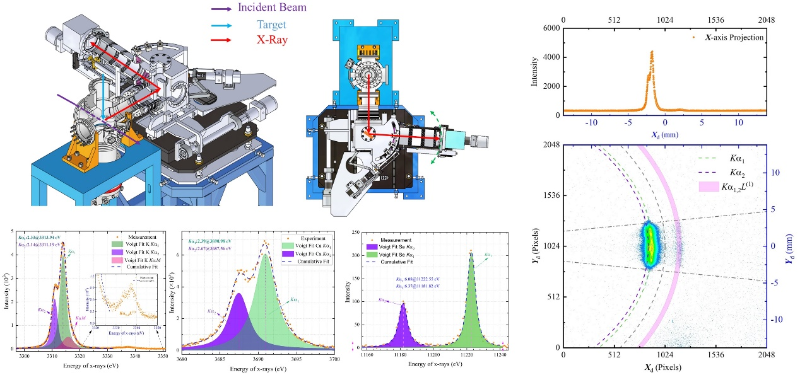Home / News / Latest News
18 04, 2024
Researchers Develop a Broadband High-resolution Crystal Spectrometer
Researchers at the Institute of Modern Physics (IMP), Chinese Academy of Sciences (CAS) have developed a broadband, high-resolution crystal spectrometer for precision X-ray fine structure measurements of inner-shell multi-vacancy ions. Their research was published in the journal Spectrochimica Acta Part B: Atomic Spectroscopy on April 3.
Investigating the X-ray fine structure of inner-shell multi-vacancy ions not only provides valuable insights into quantum electrodynamics and quantum many-body interactions, but also holds considerable application potential in various research areas such as astrophysics, high-energy-density physics, and laser-plasma physics.
Traditional X-ray detectors, such as high purity germanium detectors and silicon drift detectors, offer broad measuring bandwidths but lack the necessary energy spectral resolving power to discern fine X-ray structures due to limitations in electron-hole pair statistics.
To address these limitations, researchers at the Atomic Physics Research Center of IMP developed a novel curved crystal spectrometer geometry. It was proved practical through mathematical validation, as this innovative approach ensures a wide measurement bandwidth while maintaining the spectrometer’s resolution.
The newly developed crystal spectrometer exhibits an impressive single-exposure bandwidth ranging from 0.25 to 1.2 keV over a dynamic range of 0.6 to 18 keV. In addition, it achieves a resolving power of better that 103 over the entire dynamic range and demonstrates a two-orders-of-magnitude enhancement in detection efficiency compared with conventional planar crystal spectrometers.
These advances lay the groundwork for the experimental study of exotic electromagnetic transitions involving multi-vacancy ions at facilities such as the Cooling Storage Ring at the Heavy Ion Research Facility in Lanzhou, the Low Energy intense-highly-charged ion Accelerator Facility, and the High Intensity heavy-ion Accelerator Facility.
This work was funded by the National Key Research and Development Program of China and the National Natural Science Foundation of China.

Figure 1. Mechanical structure of the spectrometer and typical test results. (Image by WANG Wei and SHAO Caojie)
Appendix(s):
Contact Information
Email: fangliu@impcas.ac.cn


 甘公网安备 62010202000713号
甘公网安备 62010202000713号


